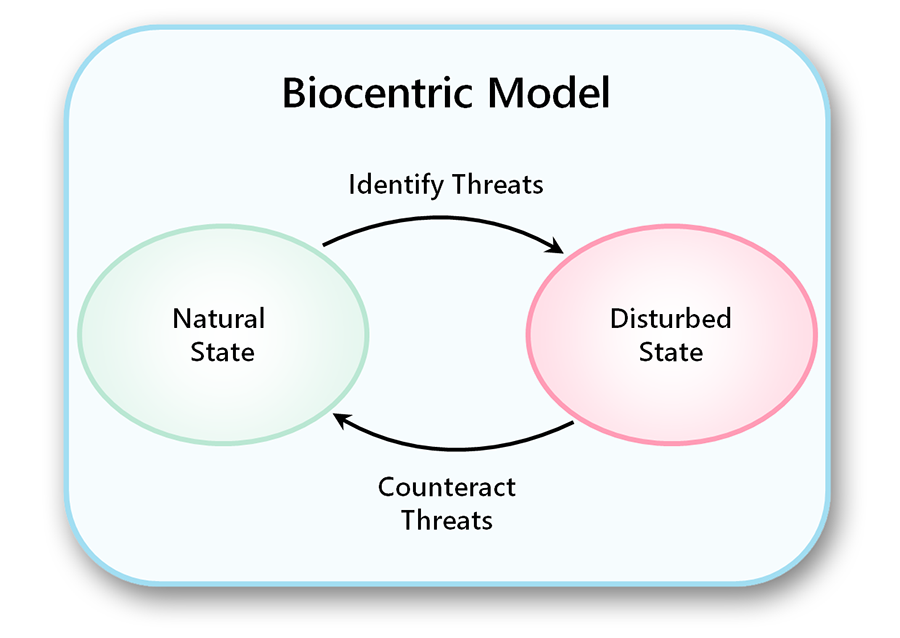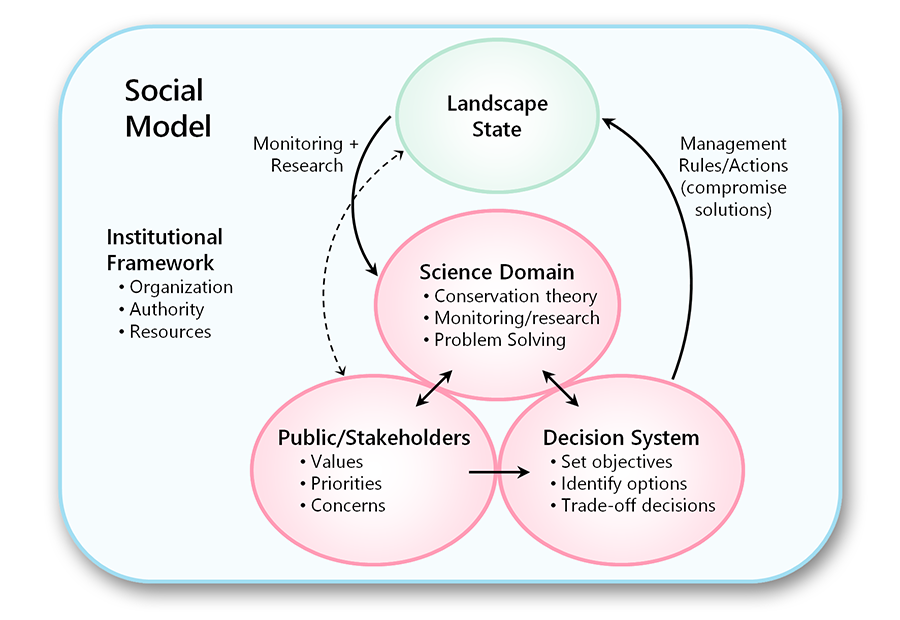The Biocentric and Social Models of Conservation
Having clarified what biodiversity is, we can now consider what it means to conserve it. The Oxford English Dictionary defines conservation as the preservation, protection, or restoration of the natural environment and wildlife. From this definition we can infer three fundamental tasks for conservation practitioners: (1) determine what the natural state is; (2) determine how the natural state is being perturbed (i.e., identify threats); and (3) develop and implement measures to mitigate the disturbances and, if necessary, restore the system. We will refer to this as the biocentric model of conservation (Fig. 1.4). This model portrays conservation as a technical problem-solving process—conservation as applied science.

The biocentric model of conservation is prominent in the conservation literature. However, it is incomplete and does not reflect the way that conservation works in practice. What is missing is the social dimension. Canadians value biodiversity, but it is not the only thing we care about. The ecological systems that support wild species also provide us with food, raw materials, opportunities for recreation, and other benefits. The problem this presents is that ecological systems have a finite capacity and cannot meet all the demands placed on them. In short, we cannot have everything we want. Consequently, trade-offs among competing values are a central feature of conservation (McShane et al. 2011). This leads us to the social model of conservation, which is centred on managing human activities (Fig. 1.5).

The social model has several interacting components. First, there is a societal component involving the general public and stakeholders (i.e., industry, environmentalists, Indigenous people, and others). These voices articulate the values, priorities, and concerns that are at play (see Chapter 3). Social values and priorities are what ultimately enable and constrain conservation.
Second, there is a science component, including both biological and social sciences, that provides the facts, ideas, and predictions needed to make robust decisions (see Chapter 4). Science is also needed to identify threats to biodiversity and to devise solutions (in common with the biocentric model). Finally, the application of science ensures that conflicts among values are resolved in the context of what can realistically be achieved.
The third component is a decision-making system that is overseen mainly, though not exclusively, by the government. In the face of complex trade-offs, a formal, structured approach to decision making is vital for finding optimum solutions (Gregory et al. 2013). The main steps include clarifying the objectives, identifying management alternatives, predicting outcomes under the available alternatives, and selecting the best option (see Chapter 10).
The three core components of the social model exist within, and are supported by, an institutional framework that provides organizational structure and establishes lines of authority. The institutional framework identifies who does what and provides the resources needed to turn management options into management actions (see Chapters 6–8).
To be clear, the social model of conservation is not an alternative to the biocentric model; it is an extension of it. The core tasks of describing the natural state of biodiversity, and the actions needed to maintain it, remain central to the social model. We can think of these steps as defining the conservation need. The rest of the model places this need in a broader social and political context, which is central to implementation.
In practice, individual components of the social model are often missing or deficient (see the case studies in Chapter 11). Institutional structures may be fragmented, decision-making systems may be dysfunctional, scientific studies may focus on the wrong questions or be ignored, and so on.

